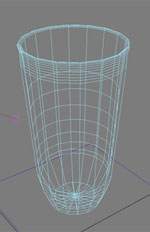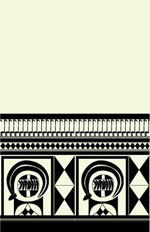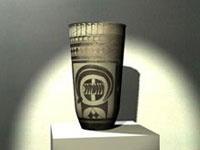|
|
The possibilities that 3d programs offer to archaeology are immense. Coming from an avid gamer background myself, I was amazed at the "reality" of some environments. While I certainly do not plan to develop an archaeological adventure game, I have been experimenting with the virtual rendition of existing archaeological artifacts.
This example shows a painted beaker of the Susa I style of Iran (after S. Lloyd, The Archaeology of Mesopotamia, 1978, p. 86, fig. 48).
|
|
|
|
|
|
|
|
First, the vessel's profile needs to be drawn. I created this one after a photo, but scanned originals work as well. The profile is then rotated 360° to form the wire frame for the entire vessel. |
|
 |
|
|
|
|
|
|
|
Next, a texture map for the vessel's surface needs to be created. I did the dark painted areas of the actual design in Macromedia FreeHand, since vector drawing allows changes and corrections easily. This was then exported to Photoshop, where the color of the vessel's unpainted surface was chosen. I also needed to adjust the size of the texture map, because, when applied to the wire model, it wraps around both the inside and the outside. |
|
 |
|
|
|
|
|
|
|
I also added a bump map that defines the structure of the
surface. In this case, I liked the idea of showing the pot as if it had
been reconstructed from single sherds. After a first rendering, I decided
that the look was too clean and new (despite the fracture lines), so I added
another map to simulate some remaining dirt on the vessel. |
|
 |
|
|
|
|
|
|
|
The rendered final product shows the beaker in a quasi museum setting: put on a small stand and properly lighted.
See here for a larger view. |
|
 |
|
|
Back
|



